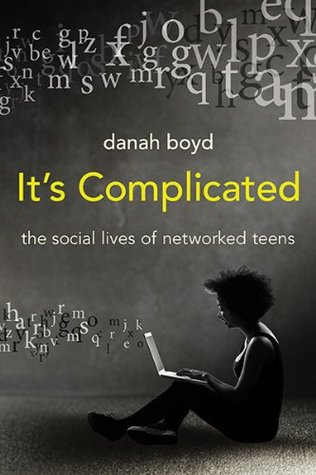More on this book
Kindle Notes & Highlights
by
Danah Boyd
Read between
August 1 - August 21, 2023
He had told me to stop looking for differences. “You’d actually be surprised how little things change. I’m guessing a lot of the drama is still the same, it’s just the format is a little different. It’s just changing the font and changing the background color really.”
Even though many of the tools and services that I reference throughout this book are now passé, the core activities I discuss—chatting and socializing, engaging in self-expression, grappling with privacy, and sharing media and information—are here to stay.
many adults fear networked technologies for the same reasons that adults have long been wary of teen participation in public life and teen socialization in parks, malls, and other sites where youth congregate. If I have learned one thing from my research, it’s this: social media services like Facebook and Twitter are providing teens with new opportunities to participate in public life, and this, more than anything else, is what concerns many anxious adults.
There is no doubt that some youth develop an unhealthy relationship with technology. For some, an obsession with gaming or social media can wreak havoc on their lives, affecting school performance and stunting emotional development. However, the language of addiction sensationalizes teens’ engagement with technology and suggests that mere participation leads to pathology. This language also suggests that technologies alone will determine social outcomes. The overarching media narrative is that teens lack the capacity to maintain a healthy relationship with social media. It depicts passionate
...more
Unlike most compulsions, teens are not less social when they engage deeply with social media. On the contrary, their participation in social media is typically highly social. Listening to teens talk about social media addiction reveals an interest not in features of their computers, smartphones, or even particular social media sites but in each other.7 Teen “addiction” to social media is a new extension of typical human engagement. Their use of social media as their primary site of sociality is most often a byproduct of cultural dynamics that have nothing to do with technology, including
...more
I often heard parents complain that their children preferred computers to “real” people. Meanwhile, the teens I met repeatedly indicated that they would much rather get together with friends in person. A gap in perspective exists because teens and parents have different ideas of what sociality should look like.
Being “addicted” to information and people is part of the human condition: it arises from a healthy desire to be aware of surroundings and to connect to society.
For example, in The Shallows, technology critic Nicholas Carr denounces the internet as insidious. He argues that the internet radically reworks our brains, destroying our ability to focus by distracting us with irrelevant information. There is little doubt that teens’ brains are being rewired through their mediated interactions. As cognitive scientist Steven Pinker points out, stimuli have always reworked, and are continuously reworking, our brains. Challenging Carr, Pinker argues that, “far from making us stupid, these technologies are the only things that will keep
I have little doubt that socializing online is rewiring teens’ brains. Through their engagement with social media, teens are learning to understand a deeply networked and intertwined world.


